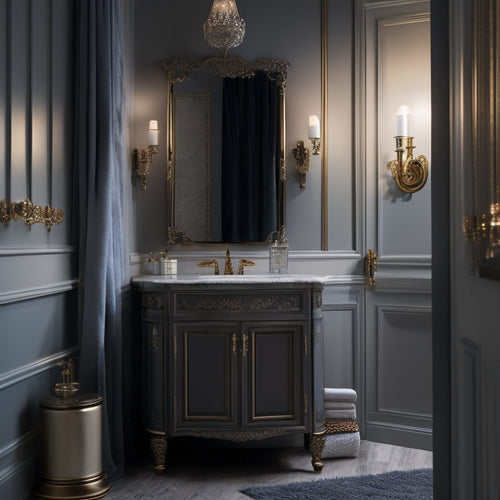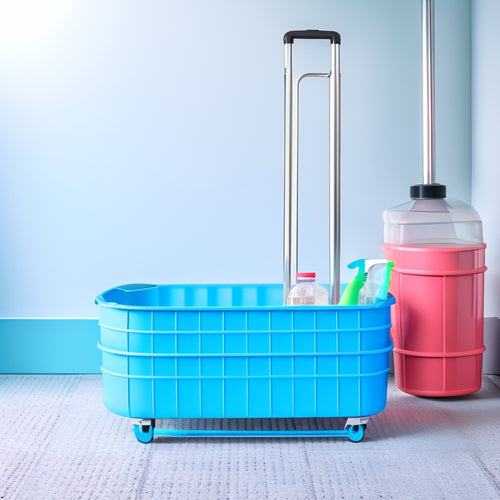
Innovative 3D Printers Revolutionizing the Industry
Share
We're witnessing a seismic shift in the 3D printing landscape, where innovative machines are rewriting the rules of additive manufacturing with unprecedented precision, speed, and accessibility. Bambu Lab's A1 Mini and X1-Carbon models are leading the charge, offering high-quality prints, multicolor capabilities, and user-friendly features like wireless printing and lidar scanner-assisted bed leveling. With prices starting at $350, these printers are making 3D printing more accessible to professionals and hobbyists alike. As we explore the latest advancements, from self-calibrating technology to effortless filament switching, it's clear that the future of 3D printing holds much more in store.
Key Takeaways
• Bambu Lab's A1 Mini and X1-Carbon models offer high-quality prints with innovative features like multicolor printing and lidar scanner bed leveling.
• AMS Lite enables effortless switching between filaments for vibrant multicolor prints, revolutionizing the 3D printing industry.
• Self-calibrating technology eliminates manual calibration needs, making 3D printing more accessible and user-friendly for professionals and hobbyists.
• Upcoming models like Anycubic Kobra 3, Artillery Sidewinder X4 Pro, and Creality Ender 3 V3 promise to further innovate the industry with new features.
• Innovative 3D printing features have transformed the industry, making it more accessible, efficient, and producing high-quality prints with ease.
Top 3D Printer Recommendations
We've narrowed down our top 3D printer recommendations to two standout models from Bambu Lab, the A1 Mini and the X1-Carbon, which excel in delivering high-quality prints, ease of use, and reliability.
The A1 Mini impresses with its multicolor printing capabilities via AMS Lite, making it an excellent choice for beginners. Priced between $350 to $460, it's an affordable option without compromising on quality.
On the other hand, the X1-Carbon offers user-friendly features like wireless printing and a larger enclosed print bed, ensuring reliable prints with specialty plastics. Its reliability upgrades, such as the lidar scanner for bed leveling, make it a solid investment for those who want hassle-free printing.
Criteria and Testing Process
When selecting the best 3D printers, we considered a range of criteria that prioritized high-quality prints, ease of use, and connectivity options to guarantee a seamless printing experience. We evaluated each printer's performance based on key factors that matter most to users like us.
Here are the essential criteria we looked for:
-
Print quality: We assessed the printer's ability to produce high-resolution prints with precise details and minimal layer shifting.
-
Hardware evaluation: We examined the printer's build quality, durability, and overall design to confirm it can withstand frequent use.
-
Ease of use: We tested the printer's user interface, setup process, and maintenance requirements to ensure a hassle-free experience.
- Connectivity options: We checked for wireless printing capabilities, mobile app support, and compatibility with various operating systems.
Company and Printer Information
Bambu Lab, a company committed to delivering exceptional 3D printing experiences, offers its A1 Mini and X1-Carbon printers with guided setup processes that get users up and running quickly.
We appreciate the straightforward buying options, with prices ranging from $350 to $460 for the A1 Mini and more for the X1-Carbon. The CEO's commitment to supporting users until 2028 provides peace of mind.
The A1 Mini's compact design and AMS Lite feature make it ideal for multicolor printing, while the X1-Carbon's larger enclosed print bed and lidar scanner cater to specialty plastics.
With Bambu Lab's dedication to ease of use and quality prints, we feel confident in recommending their printers for beginners and experienced users alike.
Future Printer Models and Care
As we look to the future of 3D printing, several upcoming models are poised to revolutionize the industry, including the Anycubic Kobra 3, Artillery Sidewinder X4 Pro, and Creality Ender 3 V3. These future printer models promise to bring innovative features and improvements to the table, further advancing the technology.
To guarantee our current printers continue to perform at their best, we must prioritize maintenance. Here are some essential care tips:
Regularly clean the printer's exterior and interior to prevent dust buildup.
Check and tighten loose parts to prevent wear and tear.
Level the print bed to ensure accurate prints.
Lubricate moving parts to reduce friction and noise.
Innovative 3D Printing Features
We're excited to explore the cutting-edge features that are pushing the boundaries of 3D printing technology.
One significant innovation is multicolor printing advancements, which have transformed the way we approach color printing. With AMS Lite, we can effortlessly switch between filaments, achieving vibrant, multicolored prints with ease.
Another game-changer is self-calibrating technology, which eliminates the need for manual calibration. This feature guarantees that our prints are consistently accurate and of high quality. We've seen this technology in action with the Bambu Lab X1-Carbon, which boasts a lidar scanner for bed leveling.
These innovative features have revolutionized the 3D printing landscape, making it more accessible and user-friendly for professionals and hobbyists alike.
As we continue to push the boundaries of what's possible, we can't wait to see what the future holds for 3D printing.
Automatic Setup and Materials
Streamlined setup processes have become a hallmark of modern 3D printers, enabling us to immerse ourselves in printing projects quickly and efficiently. With automatic calibration, we can skip tedious manual adjustments and dive straight into printing. This convenience is further enhanced by advanced materials that cater to diverse printing needs.
-
Automatic calibration guarantees precise print quality without manual intervention
-
Advanced materials like carbon fiber and metal-infused filaments expand our creative possibilities
-
Seamless integration with software enables effortless material switching and monitoring
- Compatibility with a wide range of materials allows us to experiment with new projects and ideas
3D Printer Selection and Maintenance
When selecting a 3D printer, we thoroughly assess factors such as print quality, ease of use, and material compatibility to guarantee our chosen device meets our specific needs and preferences. We consider the type of prints we want to produce, the level of detail required, and the materials we need to work with.
For instance, the Bambu Lab A1 Mini is ideal for beginners and simple materials, while the X1-Carbon is better suited for specialty plastics and larger print beds. Once we've chosen our printer, we prioritize maintenance to make sure it performs at its best. This includes regular cleaning, checking and tightening parts, and proper filament storage techniques to prevent moisture damage.
Frequently Asked Questions
Can 3D Printers Work With Metal Filaments and Alloys?
"We carefully craft complex creations, curious about metal's mighty might. Yes, 3D printers can work with metal filaments and alloys, leveraging metal strength and innovative fusion techniques to produce precise, high-performance parts."
How Do Environmental Factors Affect 3D Printing Quality and Speed?
We carefully monitor environmental factors like humidity control and temperature fluctuations, as they have a major impact on 3D printing quality and speed, ensuring our prints remain precise and reliable by maintaining ideal conditions.
Are There 3D Printers Specifically Designed for Educational Institutions?
As we venture into the domain of education, we find 3D printers tailored for schools, designed to seamlessly integrate into curricula, simplifying classroom management and fostering a collaborative learning environment that sparks imagination and creativity.
Can 3D Printers Integrate With Computer-Aided Design Software Seamlessly?
We guarantee seamless integration with computer-aided design software by identifying design flaws and implementing software updates, ensuring a streamlined workflow and minimizing errors in our 3D printing process.
What Are the Typical Warranty and Support Periods for 3D Printers?
We expect manufacturers to provide reliable warranties, typically ranging from 1-3 years, ensuring print quality and backing their products' performance, which is essential for us as we invest in these devices for consistent, high-quality outputs.
Related Posts
-

Freestanding Bathroom Cabinets With Hidden Compartments
You're on the hunt for a freestanding bathroom cabinet that conceals clutter in style. Look for one that provides amp...
-

Revamp Your Cleaning Business With This Checklist
Revamping your cleaning business requires a strategic overhaul of operational inefficiencies, starting with the imple...
-

Unleash Your Inner Artist With Watercolor Challenge
I'm taking the first step in awakening my inner artist by committing to a watercolor journey that will help me tap in...


